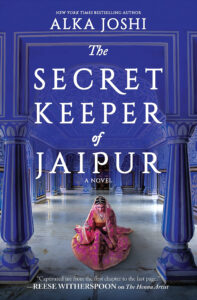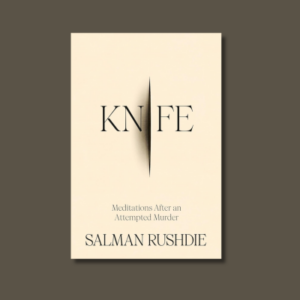 Review By: Anonymous
Review By: Anonymous
Published: 2021
Genre(s): Historical Fiction, Mystery, Cultural, Asia, Historical, India
Audience: Grades 12, Adult
Content Warnings: Discrimination, social injustice, arranged marriage, sexism, sex
Goodreads Link: The Secret Keeper of Jaipur
Summary:
It’s the spring of 1969, and Lakshmi, now married to Dr. Jay Kumar, directs the Healing Garden in Shimla. Malik has finished his private school education. At twenty, he has just met a young woman named Nimmi when he leaves to apprentice at the Facilities Office of the Jaipur Royal Palace. Their latest project: a state-of-the-art cinema.
Malik soon finds that not much has changed as he navigates the Pink City of his childhood. Power and money still move seamlessly among the wealthy class, and favors flow from Jaipur’s Royal Palace, but only if certain secrets remain buried. When the cinema’s balcony tragically collapses on opening night, blame is placed where it is convenient. But Malik suspects something far darker and sets out to uncover the truth. As a former street child, he always knew to keep his own counsel; it’s a lesson that will serve him as he untangles a web of lies.
In New York Times bestselling author Alka Joshi’s intriguing new novel, henna artist Lakshmi arranges for her protégé, Malik, to intern at the Jaipur Palace in this tale rich in character, atmosphere, and lavish storytelling.
Review:
The Secret Keeper of Jaipur is the second novel in Alka Joshi’s The Jaipur Trilogy. It takes place in India in the 1960s. There are three main characters in the novel: Lakshmi, Malik, and Nimmi. The story picks up a few years after The Henna Artist ended. Lakshmi is now married to Dr. Jay and is in charge of the Healing Garden at the Shimla Hospital where her husband works and where her younger sister Radha had her baby in the previous novel. Malik, Lakshmi’s close friend and former assistant, falls in love with Nimmi, a widow who has two young children.
Malik has returned to Jaipur for an apprenticeship in building construction. Luckily, nobody recognizes him from his youth when he was just a poor assistant to Lakshmi, the most sought-after henna artist in the prior novel. Malik is working with the wealthy and elite. He is helping build a theater with a very prominent family, the Singh family. Due to shortcuts and corrupt business practices in the building process, the theater collapses on opening night. People are injured and some die. Looking to place the blame, the Singh family quickly targets a close family friend of Lakshmi and Malik to cover their role in the disaster. After some investigating, Malik uncovers the real reason the building collapsed, ultimately saving his friend. Malik risks everything to bring the truth to light, and it works in his favor when the truth is revealed. He ultimately decides to return to Nimmi in Shimla, where he feels he belongs.
I enjoyed the book. The major themes in the book were self-discovery, women’s empowerment, loyalty, ambition, and smuggling.
I do not think this book would be as interesting to students as the first one. This book would be a bit more difficult for them to relate to since it seems to have more adult themes.
The book does not have pictures.
This book could be used for cultural connections. It offers a glimpse at Indian society, the role of women in Indian history, social classes, and political corruption. Some of these could be compared and contrasted with former and current situations in the United States.



